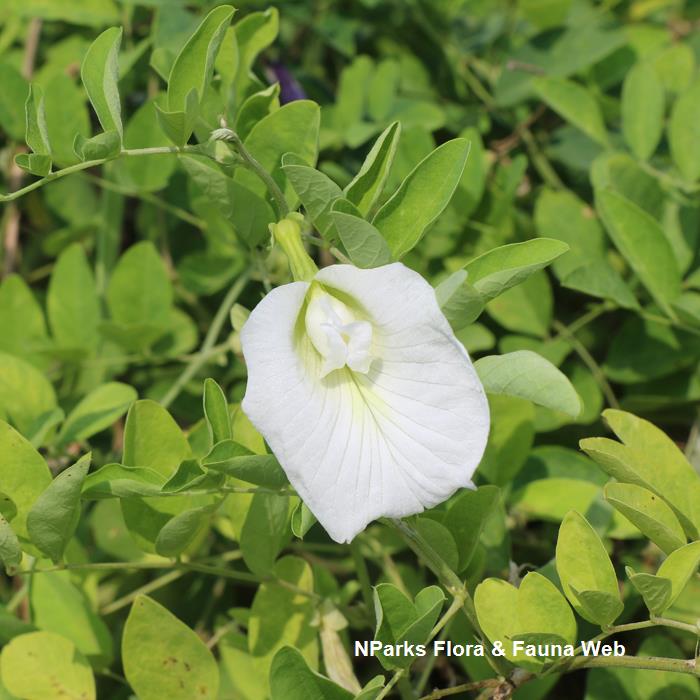.jpg)
Back
Clitoria ternatea L.
| Family Name: | Fabaceae (Leguminosae) |
| Common Name: | Butterfly Pea, Blue Pea, Blue Vine, Pigeon Wings, Mussel Shell Creeper, Bunga Telang, 蝶豆, 蝴蝶花豆 |
Name
Classifications and Characteristics
| Plant Division | Angiosperms (Flowering Seed Plants) (Dicotyledon) |
|---|---|
| Plant Growth Form | Climber |
| Lifespan (in Singapore) | Perennial |
| Mode of Nutrition | Autotrophic |
| Plant Shape | Irregular |
Biogeography
| Native Distribution | Pantropical |
|---|---|
| Native Habitat | Terrestrial (Disturbed Area / Open Ground) |
| Preferred Climate Zone | Tropical |
| Local Conservation Status | Non-native (Spontaneous (Naturalised)) |
Description and Ethnobotany
| Growth Form | It is a slender climbing legume with short, soft hairs on the stem. It has deep roots and ornamental flowers. |
|---|---|
| Foliage | Its stalked, alternately-arranged leaves are pinnate with 5-7 elliptic or ovate leaflets, 2.5-5 cm long. Each leaflet is thinly papery or membranous, and measuring 2.5-5 cm long and 1.5-3.5 cm wide. |
| Flowers | Its solitary flowers bloom in colors ranging from white to pink, to light or dark blue, funnel-shaped, 4 cm by 3 cm, single or paired, standard obovate, notched or rounded at apex, blue with yellow base, or entirely white. |
| Fruit | Its fruits are linear-oblong pods, 5-11 cm long and 0.7-1 cm wide, with a long pointed tip. |
| Habitat | It is widely cultivated in gardens and sometimes seen growing wild in disturbed, open spaces. |
| Associated Fauna | Its flowers are pollinated by insects. |
| Cultivation | It can be propagated by seed. The plant prefers full sunlight to semi-shade, and is adapted to a wide range of soil conditions, from sands to heavy clays with moderate fertility. Roots are deep rooted which fix nitrogen, thus, improving the quality of the soil. |
| Ethnobotanical Uses | Edible Plant Parts : Edible Flowers Food (Herb or Spice): The flowers are used to extract a blue, edible dye that is used in making traditional Malay pastries. Medicinal: Traditionally, roots are used to treat abdominal swelling, sore throats and mucus disorders. Juice from the roots is mixed with cold milk as a remedy to remove phlegm and chronic bronchitis. Root powder or root juice is used as an effective remedy for abdominal swellings. Seeds mashed with honey helps relieve tonsillitis. |
Landscaping Features
| Landscaping | It is suitable for growing in parks and gardens, on trellises, pergolas or fences for its attractive blue flowers. |
|---|---|
| Desirable Plant Features | Ornamental Flowers |
| Landscape Uses | Skyrise / Balcony, Parks & Gardens, Small Gardens, Trellis / Arbour / Pergola |
| Thematic Landscaping | Naturalistic Garden |
Fauna, Pollination and Dispersal
| Fauna Pollination Dispersal Associated Fauna | Bee-Attracting |
|---|---|
| Pollination Method(s) | Biotic (Fauna) |
| Seed or Spore Dispersal | Abiotic |
Plant Care and Propagation
| Light Preference | Full Sun |
|---|---|
| Water Preference | Moderate Water |
| Plant Growth Rate | Fast |
| Rootzone Tolerance | Well-Drained Soils, Fertile Loamy Soils, Easy to Grow |
| Propagation Method | Seed |
Foliar
| Foliage Retention | Evergreen |
|---|---|
| Mature Foliage Colour(s) | Green |
| Mature Foliage Texture(s) | Papery |
| Foliar Type | Compound (Trifoliate, Odd-Pinnate) |
| Foliar Arrangement Along Stem | Alternate |
| Foliar Attachment to Stem | Petiolate |
| Foliar Shape(s) | Non-Palm Foliage (Ovate, Elliptical) |
| Foliar Venation | Pinnate / Net |
| Foliar Margin | Entire |
| Foliar Apex - Tip | Obtuse |
| Foliar Base | Rounded / Obtuse |
Non - Foliar and Storage
| Stem Type & Modification | Herbaceous |
|---|---|
| Root Type | Underground (Fibrous Root) |
Floral (Angiosperm)
| Flower & Plant Sexuality | Bisexual Flowers |
| Flower Colour(s) | Purple, Blue |
|---|---|
| Flower Grouping | Solitary |
| Flower Location | Axillary |
| Flower Symmetry | Bilateral |
Fruit, Seed and Spore
| Mature Fruit Colour(s) | Brown |
|---|---|
| Fruit Classification | Simple Fruit |
| Fruit Type | Dehiscent Dry Fruit , Legume / Pod |
| Mature Seed Colour(s) | Black |
| Seed Quantity Per Fruit | Moderate (6-10) |
Image Repository
Others
| Master ID | 76 |
|---|---|
| Species ID | 1372 |
| Flora Disclaimer | The information in this website has been compiled from reliable sources, such as reference works on medicinal plants. It is not a substitute for medical advice or treatment and NParks does not purport to provide any medical advice. Readers should always consult his/her physician before using or consuming a plant for medicinal purposes. |

.jpg)

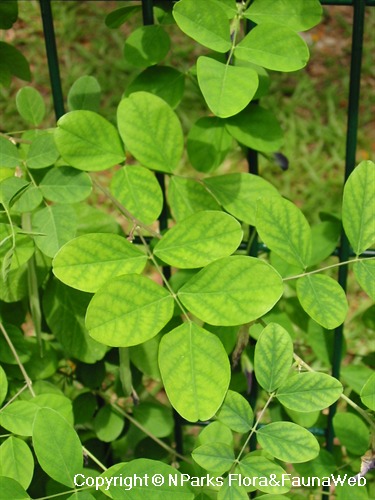
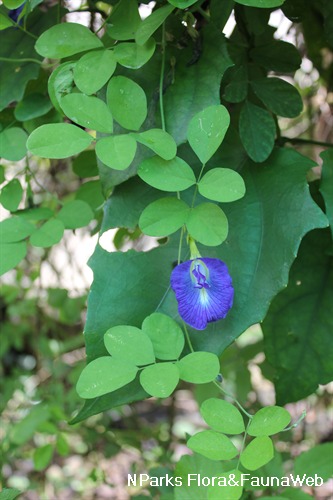

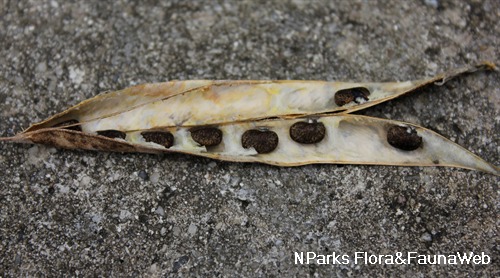
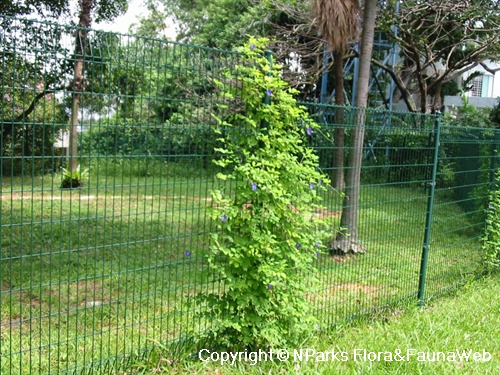
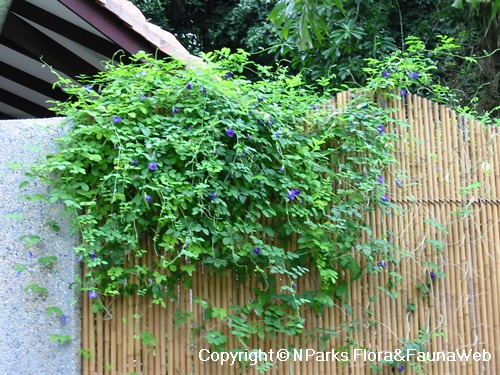
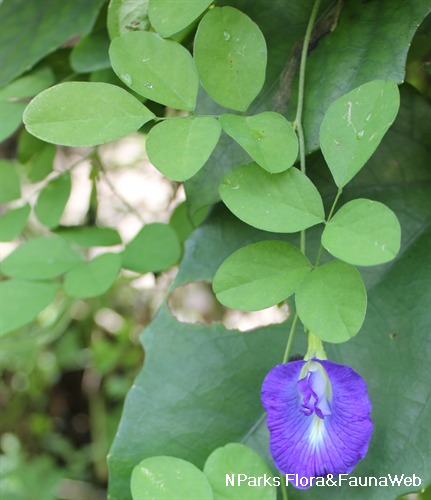
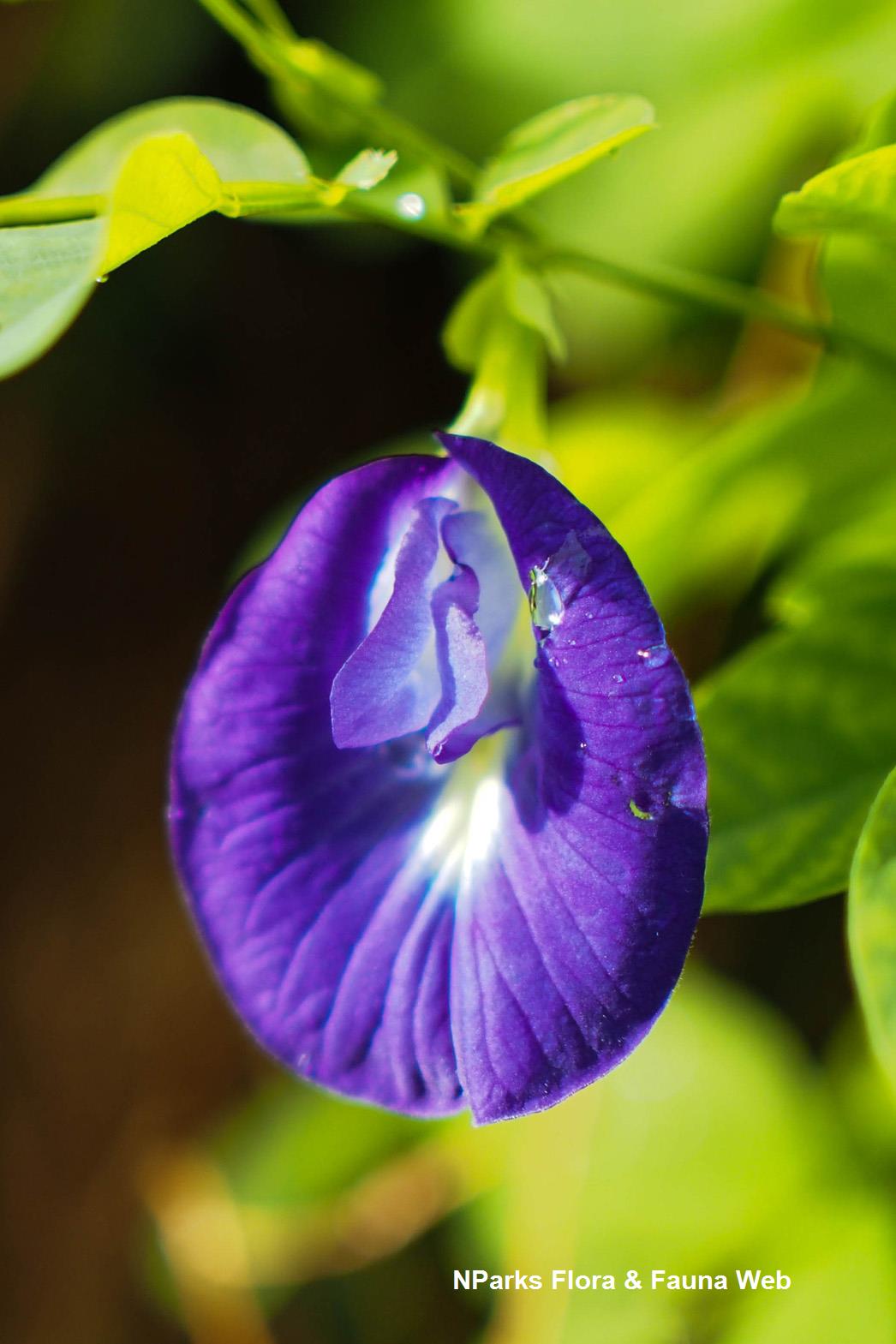
.jpg)
_pauline_tay.jpg)
